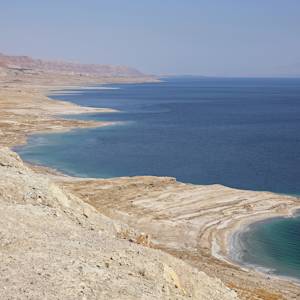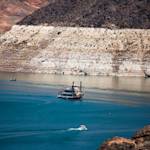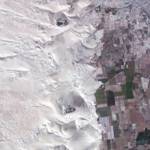Waikato River
1859 CE • New Zealand
As New Zealand's longest river, The Waikato runs from its source at Lake Taupo through the North Island. The river is home to a number of native fish including the yellow-eyed mullet, lamprey, and several species of eel. Meaning 'flowing water' in the Māori language, the Waikato is important for the Māori people, who have used the river for sustenance for hundreds of years and have a deep spiritual connection to the waterway. Upon the European colonization of the North Island, the river began to be utilized for hydroelectric power, which drastically altered the river ecosystem. "Dotted along the 425km of New Zealand’s longest river are towns, farms, dams, and outflows from sewage plants, dairy factories, meatworks, and a pulp and paper mill. Each of these affects the state of the river. By the time it nears its end at Tuakau Bridge tiny particles of dirt fill the water . . . And it’s not just dirt in the river. Nitrogen levels at Tuakau Bridge are in the worst 50 percent of all monitored river sites and phosphorus levels in the worst 25 percent. Both of these nutrients contribute to excess plant growth, which can lead to toxic algae blooms . . . [T]own and industrial wastewater only accounts for 6 percent of the nitrogen in the Waikato River, while 61 percent comes from the way the land is used, which is mainly pastoral farming . . . But by the time the river reaches the sea at Port Waikato - and makes its way into the taps of Aucklanders - more than 7000 tonnes of nitrogen and 367 tonnes of phosphorus have been added to the background levels each year, doubling the natural level of phosphorus in the river, and more than doubling the amount of nitrogen."
Quote: Farah Hancock, "The Dirty Truth About the Waikato River," RNZ, June 11, 2002. "A History of the Waikato River and Its Catchment," Waikato River Authority.
Image: Waikato River, 1900-1903, Waikato, by Muir & Moodie. Purchased 1998 with New Zealand Lottery Grants Board funds. Te Papa (PS.001957/02)


Learn about Maya Lin’s fifth and final memorial: a multi-platform science based artwork that presents an ecological history of our world - past, present, and future.

Discover ecological histories and stories of former abundance, loss, and recovery on the map of memory.

Learn how we can reduce our emissions and protect and restore species and habitats – around the world.

See how art can help us rethink the problems we face, and give us hope that each one of us can make a difference.

Help make a global memorial something personal and close to home. Share your stories of the natural world.


